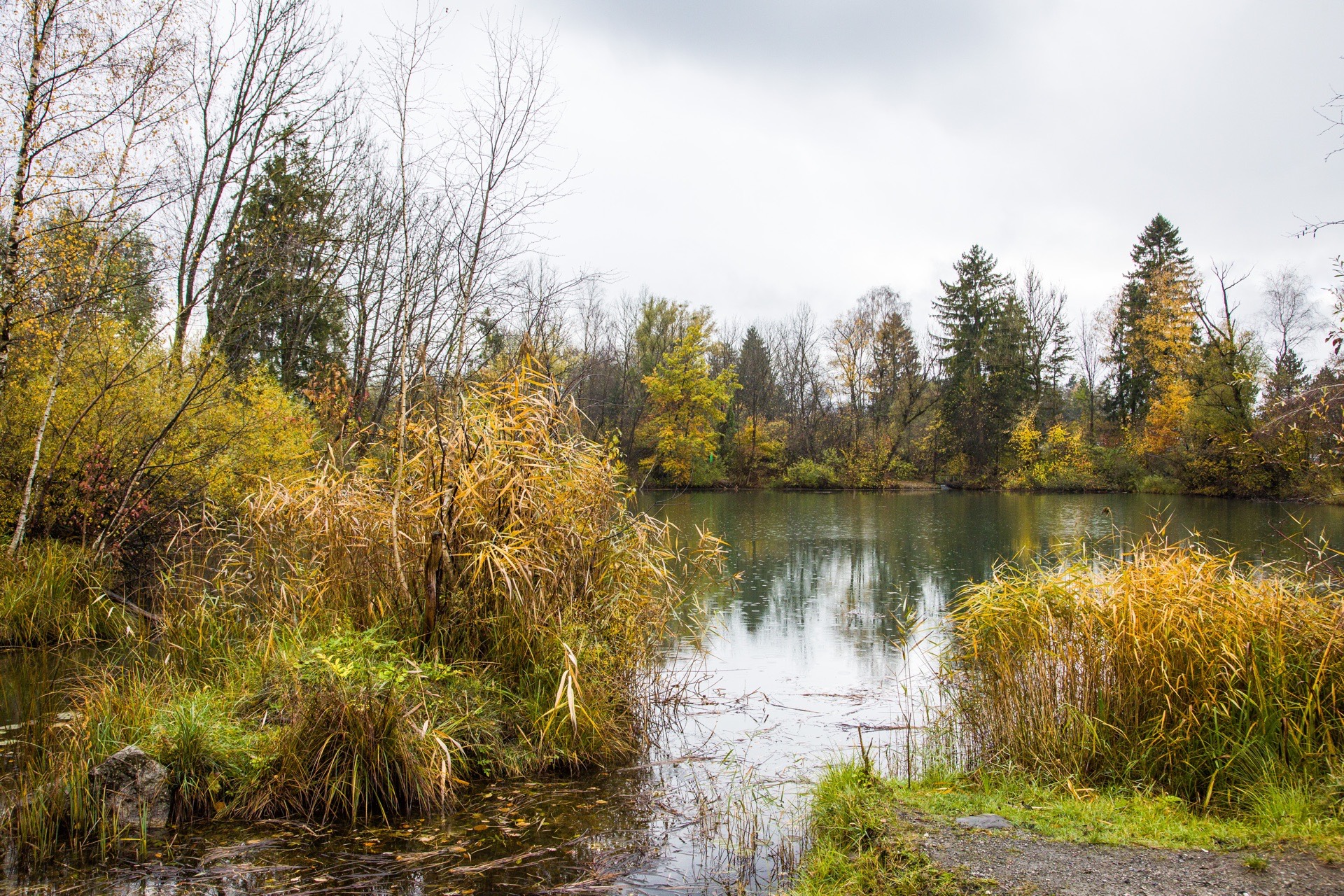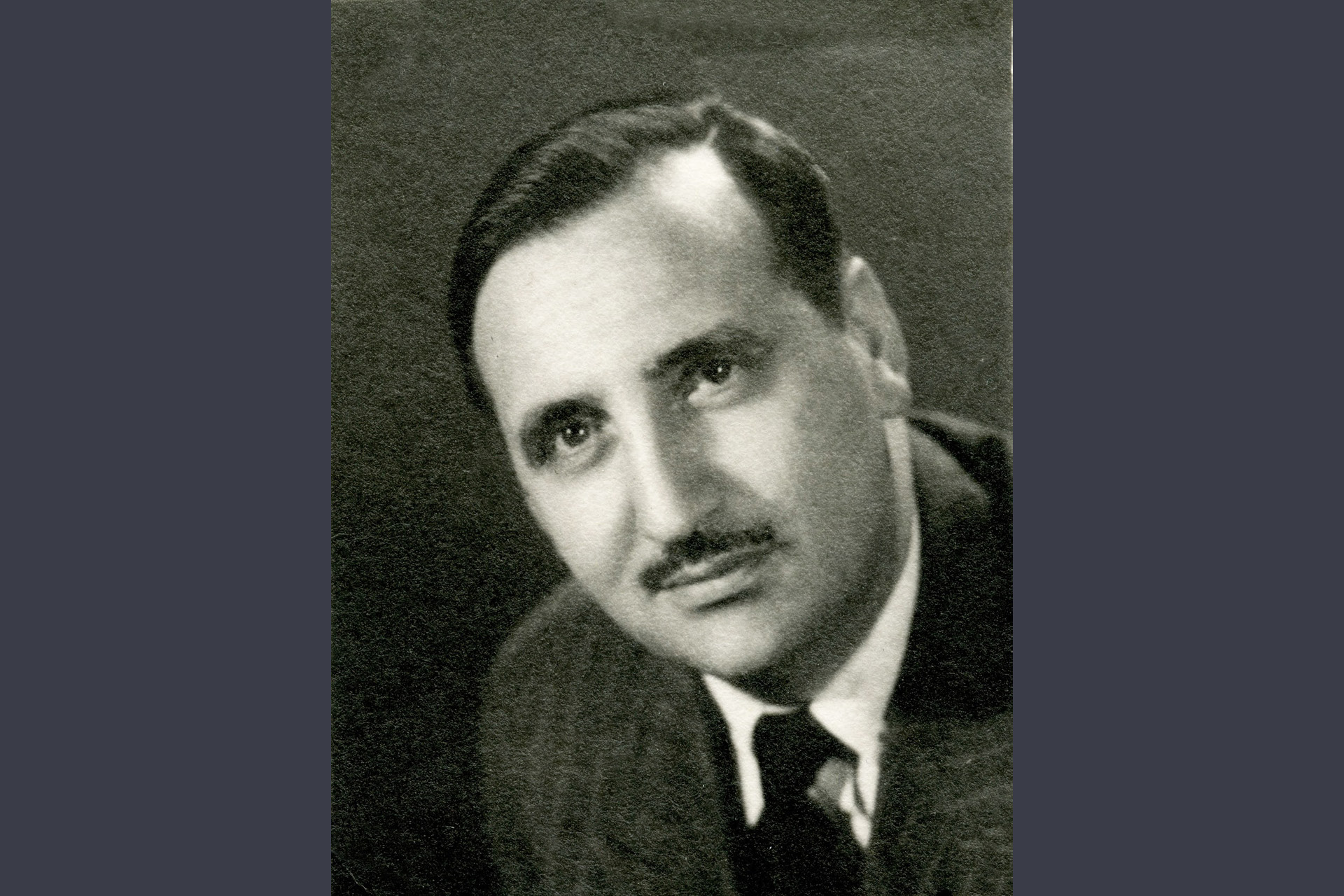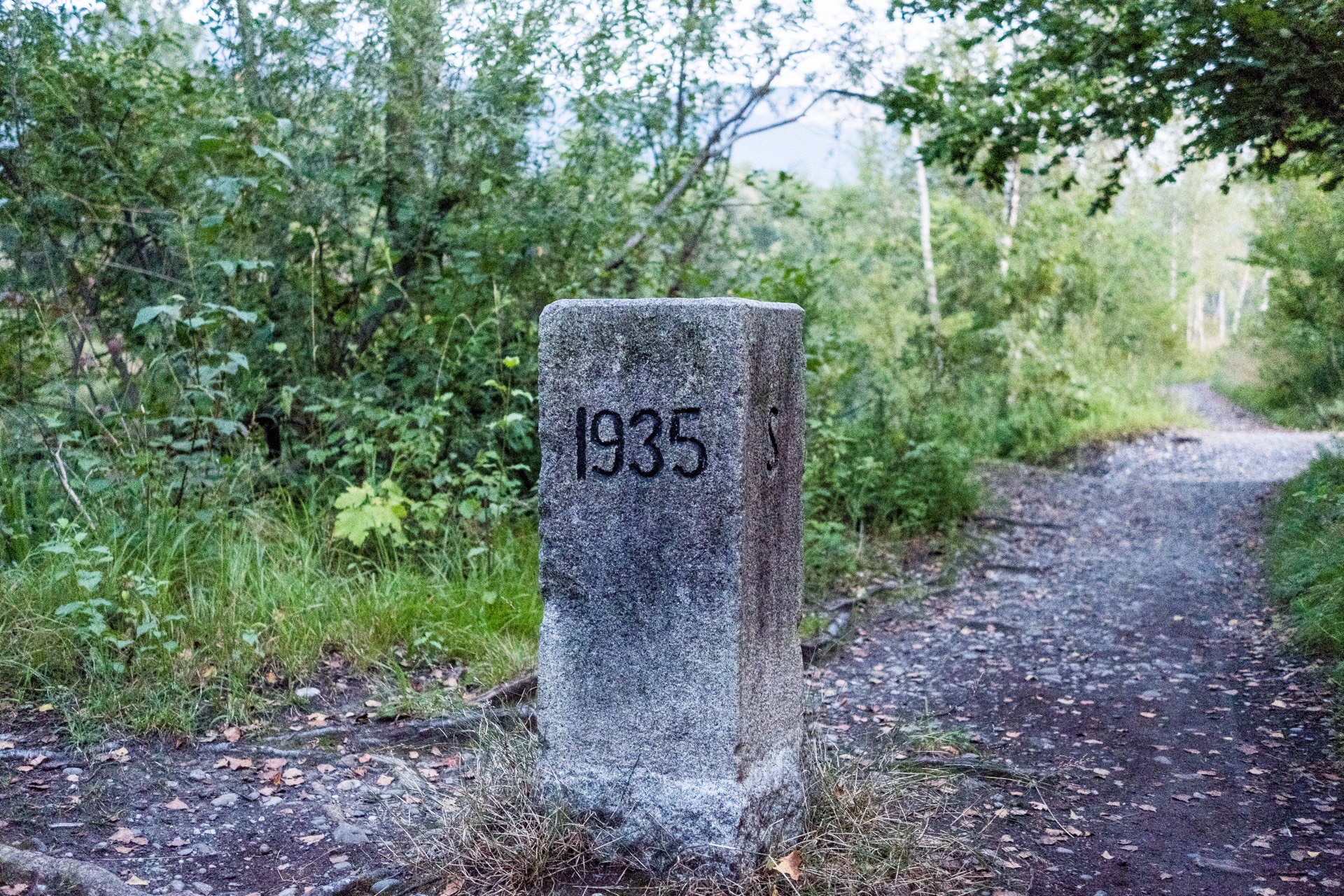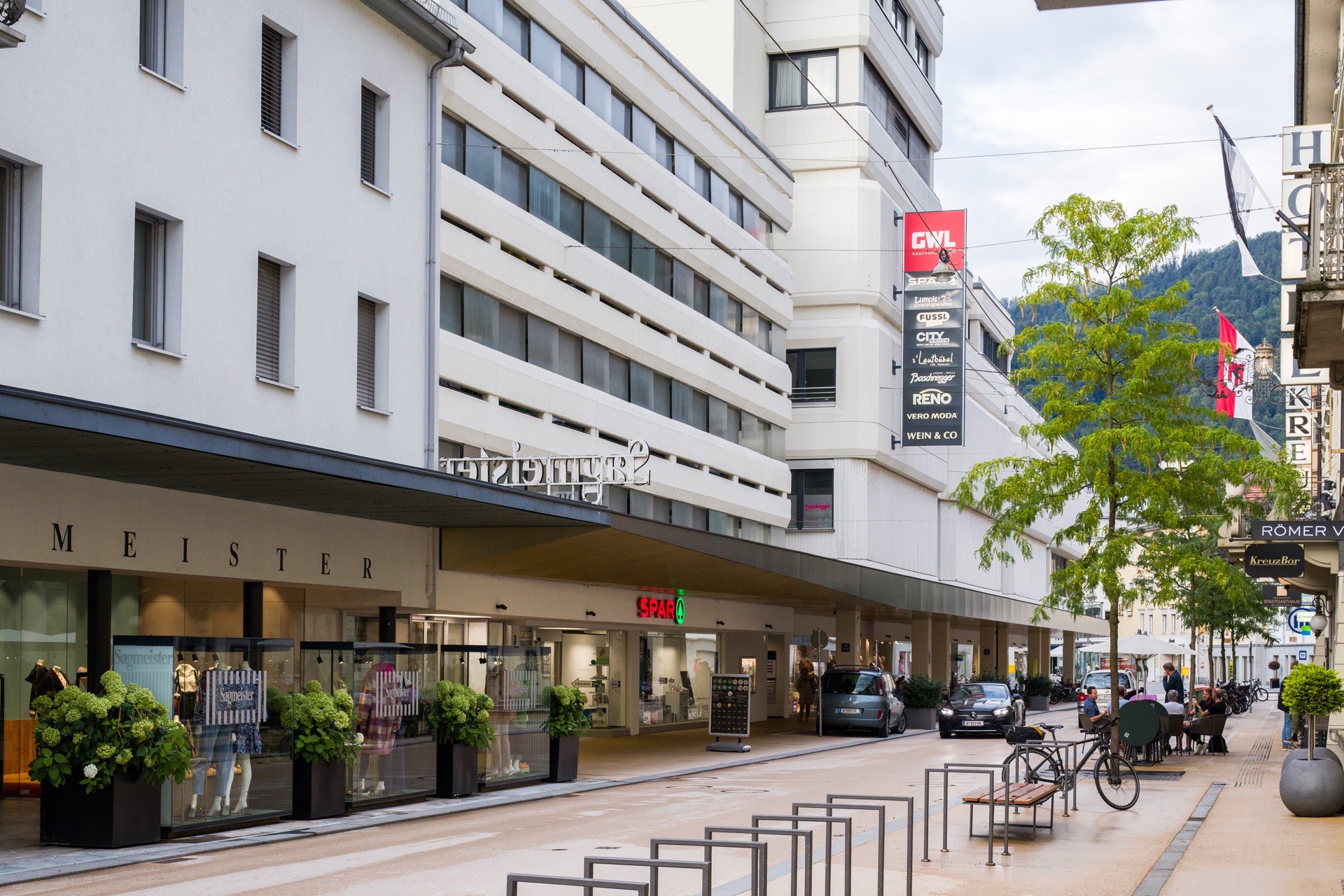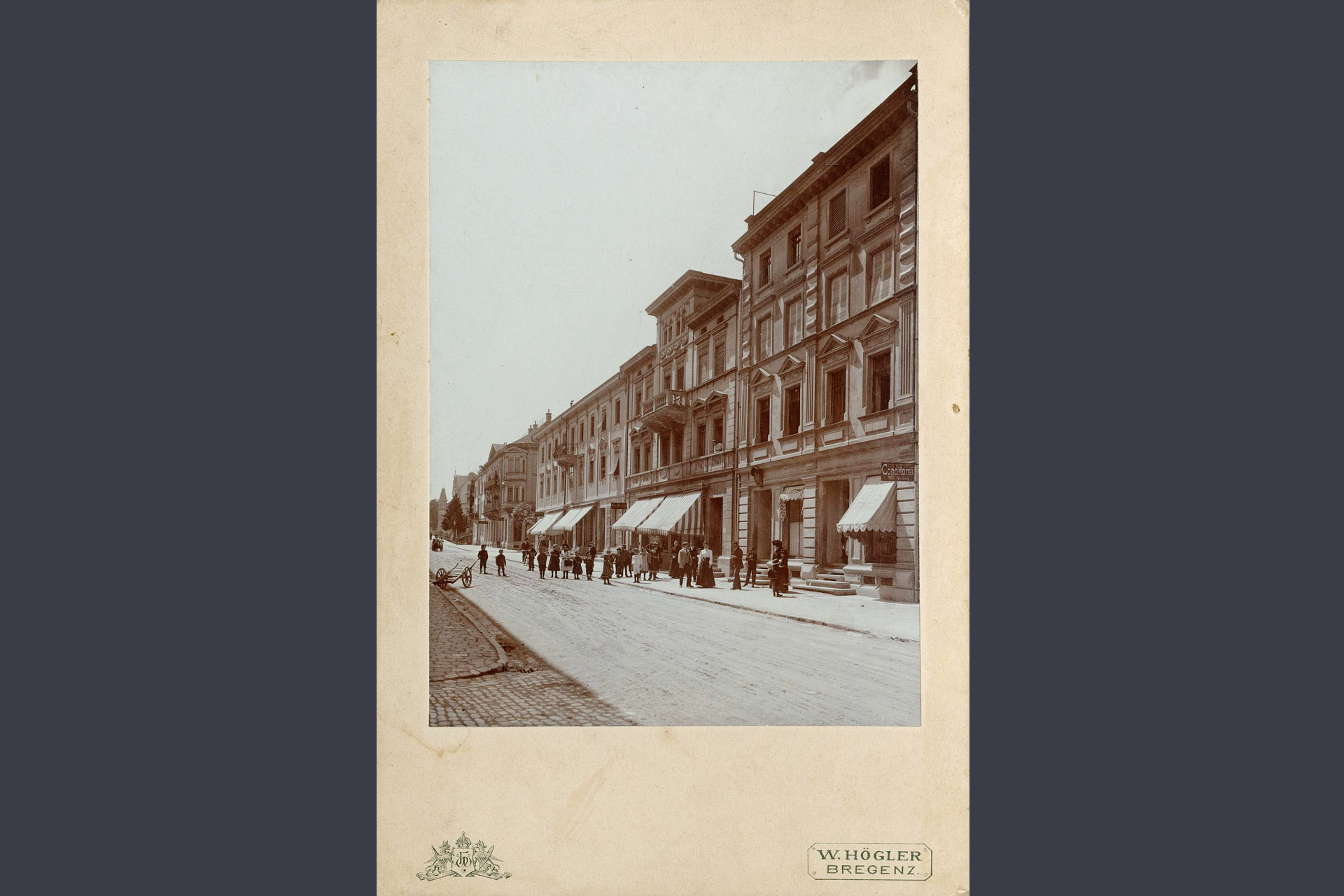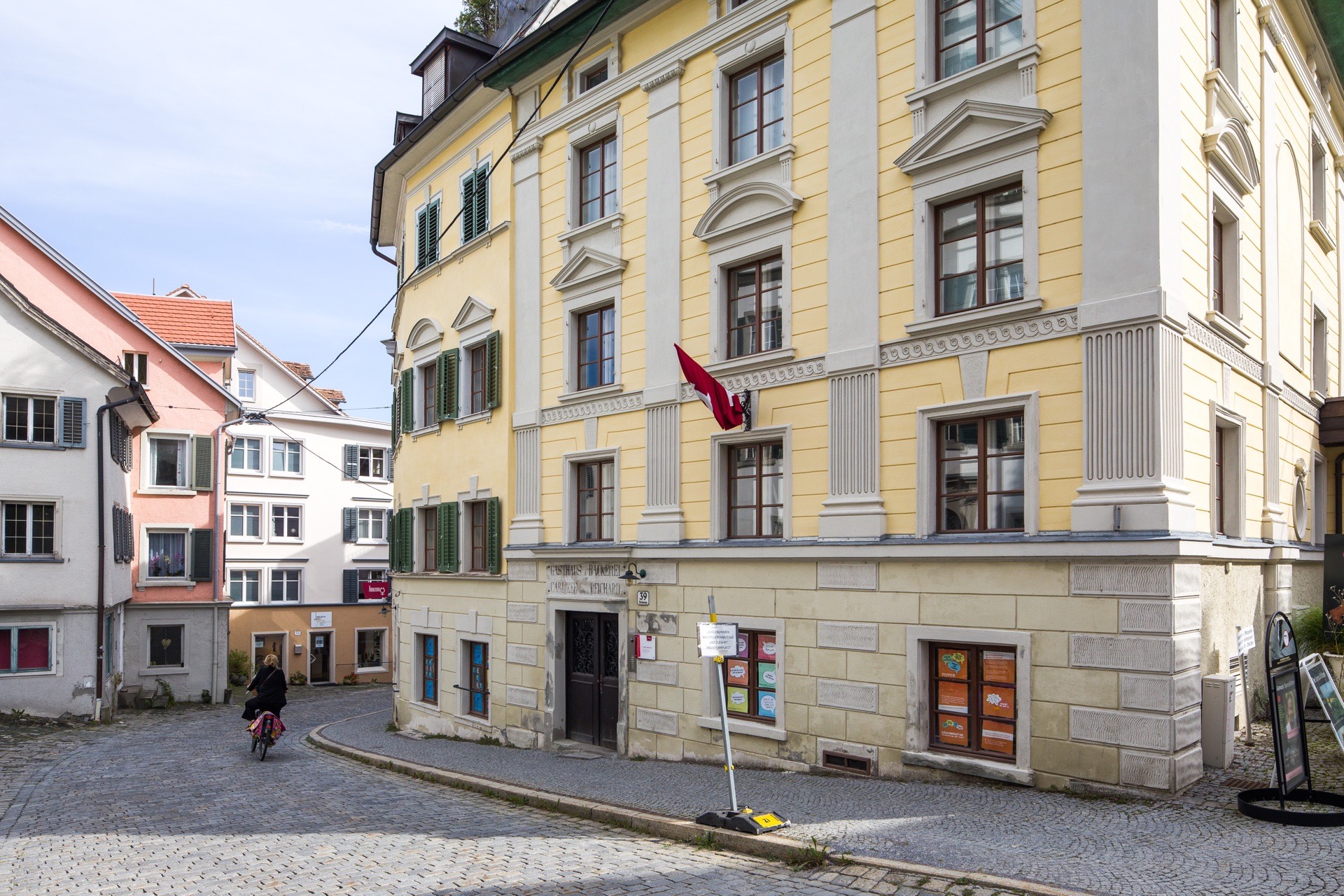Ernest Prodolliet> November 23, 1938
5 Ernest Prodolliet
The Adventures of the Swiss Consul Ernest Prodolliet
Bregenz – Hohenems, November 23, 1938
On November 23, 1938, the Swiss consular officer Ernest Prodolliet was arrested by Swiss border guards at the wall of the Diepoldsau public bath. Prodolliet, who had been employed at the Swiss consulate in Römerstrasse, Bregenz, since April 1938, later states that he had wanted to show the Jewish emigrant Max Wortsmann, who was about to be arrested in Stuttgart, a suitable place to cross the border. But his protégé was at the end of his nerves and virtually helpless and he had therefore decided to help him cross the border himself.
“At a wayside stone, I hid my money so as not to be suspected of smuggling foreign currency if necessary. I gave him the order to follow me at a distance of 10-15 steps so that he could get to safety in case something happened. (...) As we came towards the Rhine dam, I noticed a shadow; I warned Wortsmann, who took a few steps back. Then we were shot at, first from the front, then from behind. I crouched down. Then I saw nothing more of Wortsmann. I managed to stay in hiding despite the alarm from the German border guards and to work my way to the Swiss border within a few hours. I think it must have been a little after 11 p.m. when I jumped over the wall of the public bath.”[1]
Max Wortsmann, whose wife and children had already managed to escape to St Gall, first succeeded in returning to Stuttgart, and later escaped to Switzerland elsewhere.
Prodolliet, on the other hand, does not cross the border for the first time. But the unsuccessful action now becomes his undoing. The Bregenz consul Carl Bitz has had enough of his unconventional employee's escapades. Prodolliet, who comes from Amriswil, south of Lake Constance, worked for a long time as a Swiss diplomat in the USA before he was drawn to Lake Constance in 1938. In the autumn of 1938, he was already known among Jewish emigrants and Swiss escape facilitators for his generosity in granting visas.

Ernest Prodolliet, his wife Frieda and his daughter Evelyne in Chicago, before 1938
Family Archive Rene Prodolliet
Not least, he helped the St. Gall refugee organization led by Recha Sternbuch with hundreds of transit visas for emigrants to Palestine. At the height of the wave of refugees in August, he issues entry visas for Jewish refugees to Switzerland on his own authority. On August 17, however, he tests the controls at the Diepoldsau border crossing on behalf of Heinrich Rothmund, the head of the Swiss refugee police. His report to Rothmund attempts to arouse understanding for the plight of the refugees, whose reports “unfortunately, by all means correspond to the facts”. But Rothmund uses Prodolliet's report instead to justify the necessity of closing the border.
Prodolliet, of course, continues his clandestine activities.
On September 26, he has the Jewish refugee Josef Udelsmann with him in his car at the road customs in Au and uses his acquaintance with the border police. He issues visiting permits to other refugees, for sick relatives in the Diepoldsau camp, or informs officials at the passport control who are sympathetic to him in advance about refugees with whom he should turn a blind eye. And, of course, he meets regularly with Paul Grüninger at the Zehbäck inn in Bregenz.
The pub has a “dubious” reputation, as they say. Smugglers, currency traffickers and prostitutes would frequent it. Prodolliet is said to have relations with other women. But that's hardly the point of their meetings at Zehbäck. Prodolliet and Grüninger talk about visas and border crossings. Refugees' belongings are also deposited at Zehbäck to be smuggled into Switzerland.
Recommended reading:
Stefan Keller, Grüningers Fall. Geschichten von Flucht und Hilfe. Zurich 1993 (1998); Jörg Krummenacher, Flüchtiges Glück. Die Flüchtlinge im Grenzkanton St. Gallen zur Zeit des Nationalsozialismus. Zurich 2005.
[1] Stefan Keller, Grüningers Fall. Geschichten von Flucht und Hilfe. Zürich 1993 (1998), S. 79. Siehe auch Jörg Krummenacher, Flüchtiges Glück. Die Flüchtlinge im Grenzkanton St. Gallen zur Zeit des Nationalsozialismus. Zürich 2005, S. 159ff.
Border near the Diepoldsau bath after the border closure during the first Corona Lockdown, March 27, 2020
(Photo: Hanno Loewy)
5 Ernest Prodolliet
The Adventures of the Swiss Consul Ernest Prodolliet
Bregenz – Hohenems, November 23, 1938
On November 23, 1938, the Swiss consular officer Ernest Prodolliet was arrested by Swiss border guards at the wall of the Diepoldsau public bath. Prodolliet, who had been employed at the Swiss consulate in Römerstrasse, Bregenz, since April 1938, later states that he had wanted to show the Jewish emigrant Max Wortsmann, who was about to be arrested in Stuttgart, a suitable place to cross the border. But his protégé was at the end of his nerves and virtually helpless and he had therefore decided to help him cross the border himself.
“At a wayside stone, I hid my money so as not to be suspected of smuggling foreign currency if necessary. I gave him the order to follow me at a distance of 10-15 steps so that he could get to safety in case something happened. (...) As we came towards the Rhine dam, I noticed a shadow; I warned Wortsmann, who took a few steps back. Then we were shot at, first from the front, then from behind. I crouched down. Then I saw nothing more of Wortsmann. I managed to stay in hiding despite the alarm from the German border guards and to work my way to the Swiss border within a few hours. I think it must have been a little after 11 p.m. when I jumped over the wall of the public bath.”[1]
Max Wortsmann, whose wife and children had already managed to escape to St Gall, first succeeded in returning to Stuttgart, and later escaped to Switzerland elsewhere.
Prodolliet, on the other hand, does not cross the border for the first time. But the unsuccessful action now becomes his undoing. The Bregenz consul Carl Bitz has had enough of his unconventional employee's escapades. Prodolliet, who comes from Amriswil, south of Lake Constance, worked for a long time as a Swiss diplomat in the USA before he was drawn to Lake Constance in 1938. In the autumn of 1938, he was already known among Jewish emigrants and Swiss escape facilitators for his generosity in granting visas.

Ernest Prodolliet, his wife Frieda and his daughter Evelyne in Chicago, before 1938
Family Archive Rene Prodolliet
Not least, he helped the St. Gall refugee organization led by Recha Sternbuch with hundreds of transit visas for emigrants to Palestine. At the height of the wave of refugees in August, he issues entry visas for Jewish refugees to Switzerland on his own authority. On August 17, however, he tests the controls at the Diepoldsau border crossing on behalf of Heinrich Rothmund, the head of the Swiss refugee police. His report to Rothmund attempts to arouse understanding for the plight of the refugees, whose reports “unfortunately, by all means correspond to the facts”. But Rothmund uses Prodolliet's report instead to justify the necessity of closing the border.
Prodolliet, of course, continues his clandestine activities.
On September 26, he has the Jewish refugee Josef Udelsmann with him in his car at the road customs in Au and uses his acquaintance with the border police. He issues visiting permits to other refugees, for sick relatives in the Diepoldsau camp, or informs officials at the passport control who are sympathetic to him in advance about refugees with whom he should turn a blind eye. And, of course, he meets regularly with Paul Grüninger at the Zehbäck inn in Bregenz.
The pub has a “dubious” reputation, as they say. Smugglers, currency traffickers and prostitutes would frequent it. Prodolliet is said to have relations with other women. But that's hardly the point of their meetings at Zehbäck. Prodolliet and Grüninger talk about visas and border crossings. Refugees' belongings are also deposited at Zehbäck to be smuggled into Switzerland.
Recommended reading:
Stefan Keller, Grüningers Fall. Geschichten von Flucht und Hilfe. Zurich 1993 (1998); Jörg Krummenacher, Flüchtiges Glück. Die Flüchtlinge im Grenzkanton St. Gallen zur Zeit des Nationalsozialismus. Zurich 2005.
[1] Stefan Keller, Grüningers Fall. Geschichten von Flucht und Hilfe. Zürich 1993 (1998), S. 79. Siehe auch Jörg Krummenacher, Flüchtiges Glück. Die Flüchtlinge im Grenzkanton St. Gallen zur Zeit des Nationalsozialismus. Zürich 2005, S. 159ff.
Border near the Diepoldsau bath after the border closure during the first Corona Lockdown, March 27, 2020
(Photo: Hanno Loewy)

